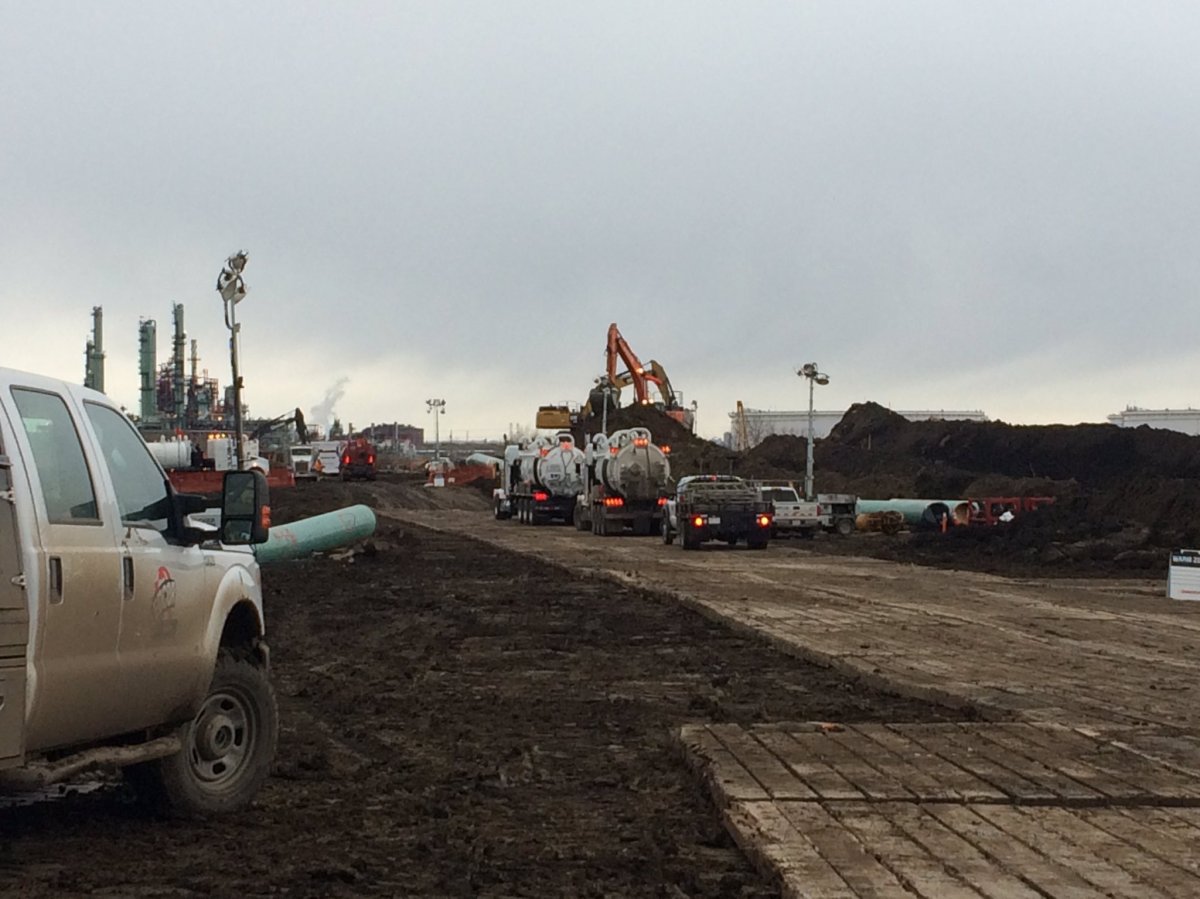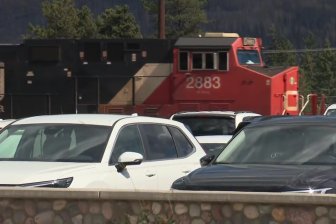Serious accidents involving both rail and pipeline transport of dangerous substances like crude oil and gas increased in 2017 over the previous year, according to statistics compiled by the Transportation Safety Board.

Of the total 1,090 railway incidents that were serious enough to be deemed “accidents” last year, 115 involved dangerous substances, including five accidents where the substances leaked. That’s up from 100 accidents involving dangerous goods in 2016 that included only two involving leaks.
Similarly, the number of pipeline accidents went up last year to five from zero in 2016. One of those accidents resulted in the February 2017 spill of nearly 200,000 litres of crude oil condensate from an Enbridge pipeline at an industrial site near Edmonton.
READ MORE: Enbridge shuts down area pipelines after leak in Strathcona County
Jean Laporte, the Chief Operating Officer of the Transportation Safety Board, said his agency will be looking in the coming months into why serious railway accidents have gone up.
“The overall railway accident numbers that increased are what we’re going to be analyzing in more detail,” said Laporte.
“We’re going to dig a bit deeper in the next little while to understand why and see if there’s anything that needs to be analyzed further in the coming year.”

Get daily National news
Watch below: On Oct. 23, 2017, Sarah Kraus filed this report the day after a dozen train cars derailed north of Edmonton. Some of the derailed cars were leaking oil.

As for the increase in pipeline accidents, Laporte is less worried. He believes the main reason they saw a spike in accidents was due to a rainier year, which caused more soil erosion that exposed pipelines to disruptions and spills.
“We’re not particularly concerned about this increase at this time,” said Laporte. “Now, in future years, we’ll be looking to see whether that becomes a pattern, whether there’s a continuous increase or not.”
Meanwhile, Statistics Canada also released pipeline data Tuesday that showed the amount of crude oil that flowed through Canadian pipelines in December 2017. According to the data, there has been a 3.9 per cent increase in the amount of oil being transported to and from Canadian oil fields and plants over the last year.
READ MORE: Enbridge reports $765M third quarter profit
Adam Najmala, an analyst with Statistics Canada, said the increase is most likely due to a stable recovery after the 2016 Fort McMurray wildfire shut down oilsands companies and slowed crude oil production across the country.
“December seemed pretty strong historically,” said Najmala. “Definitely these number are pretty stable.”
Watch below: (From January 2018) The new mayor of Wood Buffalo is optimistic about the region’s future as the economy begins to rebound.




Comments